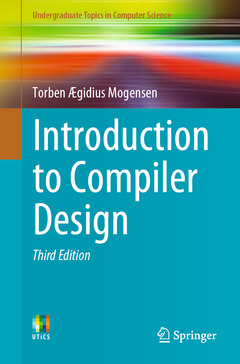Description
Introduction to Compiler Design (3rd Ed., 3rd ed. 2024)
Undergraduate Topics in Computer Science Series
Author: Mogensen Torben Ægidius
Language: English
287 p. · 15.5x23.5 cm · Paperback
Description
/li>Contents
/li>Biography
/li>Comment
/li>
The third edition of this textbook has been fully revised and adds material about the SSA form, polymorphism, garbage collection, and pattern matching. It presents techniques for making realistic compilers for simple to intermediate-complexity programming languages. The techniques presented in the book are close to those used in professional compilers, albeit in places slightly simplified for presentation purposes. "Further reading" sections point to material about the full versions of the techniques.
All phases required for translating a high-level language to symbolic machine language are covered, and some techniques for optimising code are presented. Type checking and interpretation are also included.
Depending on how much of the material from the book is used, it is suitable for both undergraduate and graduate courses for introducing compiler design and implementation.
These books may interest you

Programming Language Concepts 55.90 €

Compiler DesignVirtual Machines 49.57 €


